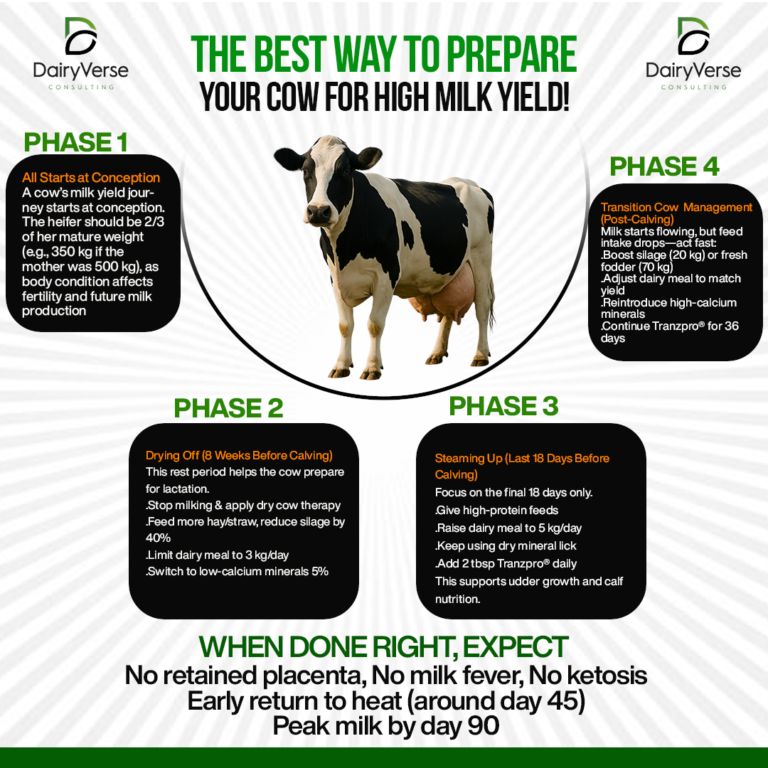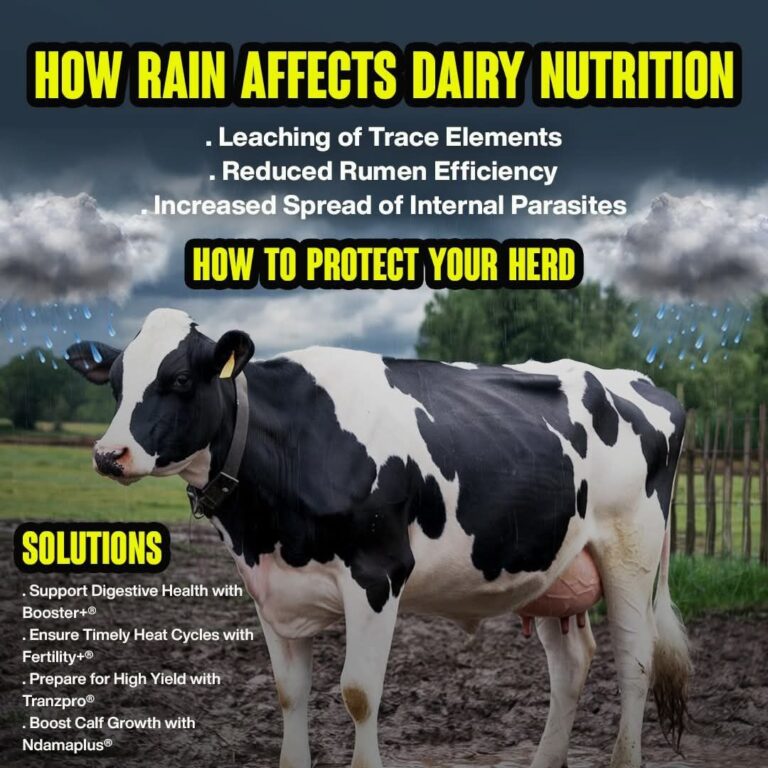How to feed your dairy calf

Provide high quality milk or milk replacers during the first 3 months. Milk replacer is a specially formulated powder that contains the nutrients that a calf needs for proper growth and development. It is usually made from skim milk, whey, or a combination of the two, and may also contain additives like vitamins and minerals. It is important to choose a milk replacer that is specifically formulated for dairy calves, as it will have the right balance of nutrients for their needs. You also opt for skim milk only. Get our latest calf rearing technologies guide here.
Follow the manufacturer’s feeding recommendations: The manufacturer’s feeding recommendations will provide specific guidance on how much milk replacer to feed the calf, how often to feed it, and how to prepare the milk replacer. It is important to follow these recommendations closely, as overfeeding or underfeeding the calf can lead to health problems.
Gradually transition to solid feed: As the calf grows and becomes more mobile, it will be ready to start consuming solid feed in addition to milk replacer. This usually begins around 2-3 weeks of age. Start by introducing small amounts of a high-quality calf starter feed, and gradually increase the amount over time as the calf becomes more accustomed to eating solids.
Provide clean, fresh water: It is important to make sure the calf has access to clean, fresh water at all times. Water helps to support proper digestion and hydration, and is essential for the calf’s overall health and well-being.

A well raised calf is the backbone of a thriving dairy venture. It is important to know feeding típs in calf management. The following are the main tips in calf feeding regimen:-
✓0 – 3 Days
Feed your calf purely on colostrum immediately after birth upto to the third day. Excess colostrum can be preserved.
✓1 month
Cow milk (3-4ltrs) + starter pellets, twice a day.
✓2 months
Cow milk (2-3ltrs) + starter pellets + soft feeds (sweet potato vines). Twice a day.
Deworm and introduce mineral lick.
✓3 months
Cow milk (1-3litres) + calf finisher pellets, twice a day. Deworm and introduce mineral block. Introduce Ndamaplus®️ for faster growth rate.
✓4 months
Calf weaner meal + Hay + Silage. Deworm.
After 5 months, feed the calf on hay, silage or napier grass.
Deworm after every 3 months till the calf is fully grown.
Monitor the calf’s growth and development: Keep track of the calf’s growth and development, and make adjustments to the feeding plan as needed. Consult with a veterinarian or a livestock nutritionist if you have any concerns about the calf’s nutrition or overall health.
By following these guidelines, you can help ensure that your dairy calf gets the proper nutrition it needs for optimal growth and development. To get a copy of our Calf rearing guide (Latest Calf Rearing Technologies), Click here.








